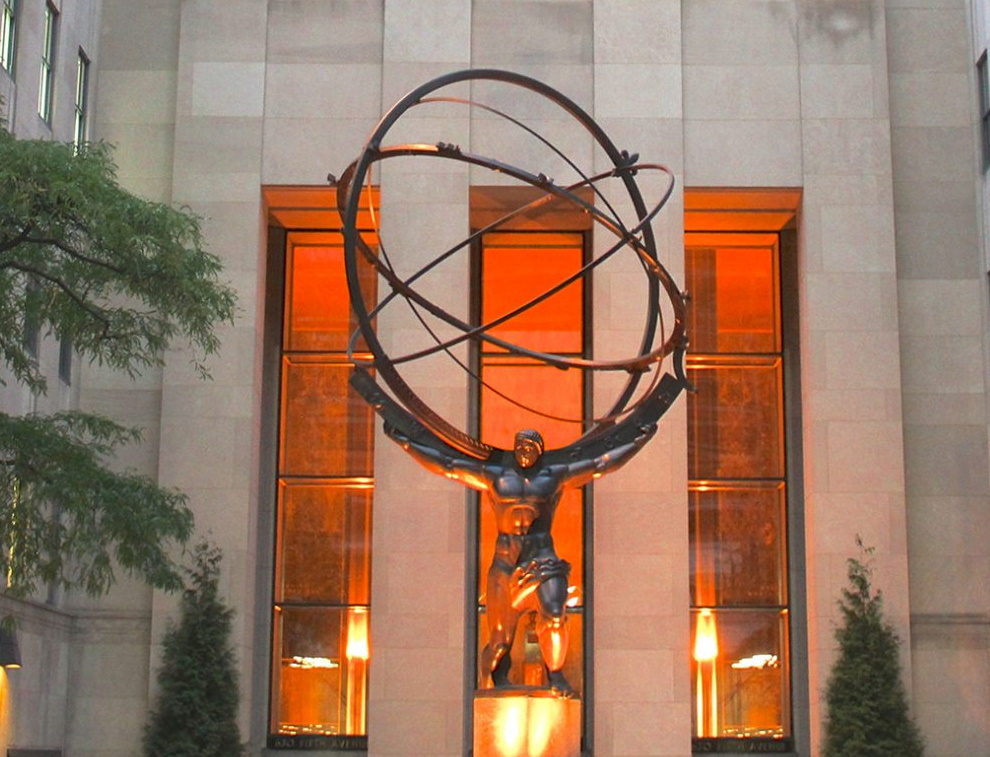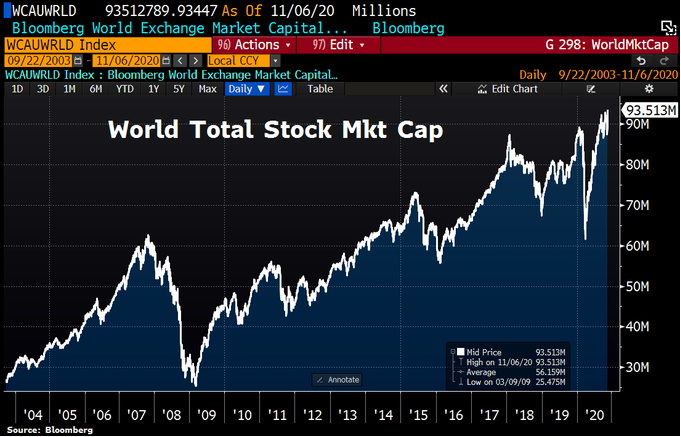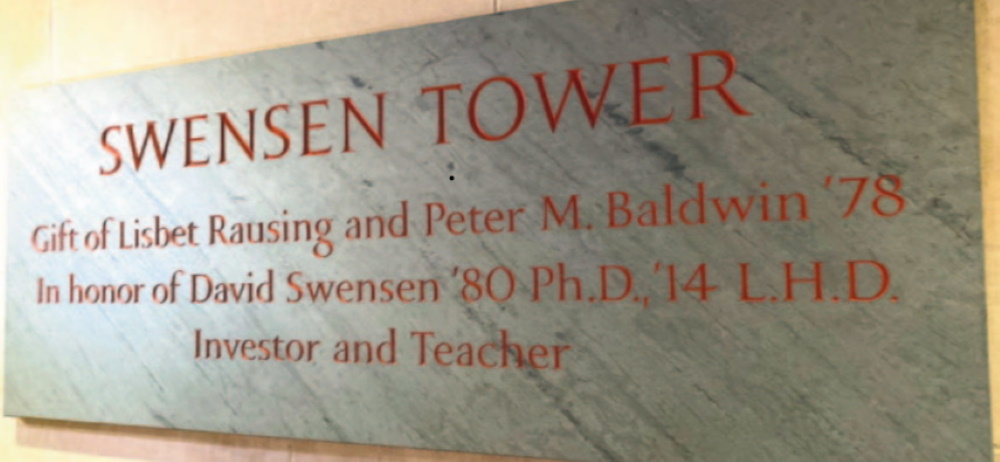The next Swensen: Will They Know Her when They See Her?
by charles | Comments are closed07/29/2021
Talent hits a target that no one else can hit. Genius hits a target no one else can see.
– Arthur Schopenhauer, German, philosopher
Chief investment officers are an eclectic group with a singular purpose – protect assets while generating income. The great ones add value that can last for generations.
Under David Swensen’s stewardship, for example, the Yale University endowment reported total AUM of $31.2 billion on June 30, 2020, a full third more than if Yale had put the endowment in an S&P tracker fund in 1985, the year Mr. Swensen started as CIO. And that’s after billions in distributions to the school. He will be missed.
But how do we find the next generation of investment superstars? Who will be the next Swensen, Volent, Malpass, Falls, or Golden?
Recruiting these executives is our business, and we avidly follow all institutional and family office investment heads managing assets over $500 million – and many with less – tracking their performance and pay and scrutinizing their abilities.
For us, the search process begins with two questions.
The first is data-driven. Can we identify skill and persistence in a candidate’s background?
The second is based on intuition and experience. Is this candidate someone that catches our eye? Piques our curiosity?
Oscar Wilde wrote in Lord Arthur Savile’s Crime and Other Stories that, “It is better to have a permanent income than to be fascinating.” And while we certainly agree with the author’s sentiment, we think a fascinating background is an important contributor to a great investor.
Let me explain.
We’ve looked at an untold number of resumes over the years and met with countless candidates. Most were bright and hard-working and yet, there wasn’t much to distinguish one from the other.
But every now and then, someone just jumped off the page. Their backgrounds were different, interesting, exciting.
Maybe they spent a year living on a Navajo reservation, learning the language, and volunteering in the health clinic. Or they set up a cloth dyeing business in Thailand, or sourced rare wood veneers in the Malaysian rain forests.
As search consultants we never stop looking for these individuals. Their memorable stories make our day.
Here are three exceptional examples of what we mean.
Paula Volent – Artistic Endeavors
Ms. Volent has dominated the institutional investment performance charts for years, but that wasn’t where she started or intended to be.
Armed with a BA in art history and chemistry from the University of New Hampshire, Ms. Volent set her sights on the art world and a role in paper and canvas preservation.
After six years as a curatorial assistant at the Bowdoin College Museum of Art, a year at the Clark Art Institute, more schooling at NYU’s Institute of Fine Arts – MA and certificate in art conservation – and additional internships at the Palace of Fine Arts in San Francisco and the LA County Museum, the business side of art caught her eye and she thought it time to earn a return on her years of study and training.
She launched a conservation studio in an empty grocery store in Venice Beach and cast her net in that fragmented and diffuse world Sarah Thornton described as “a loose network of overlapping subcultures held together by a belief in art.”
From 1990 to 1994 this was Volent’s beat, mixing and meeting with the celebrity elite, LA artists, and big-money collectors, canvassing for prospects and building her brand.
Yet, with all that hustle, she still found time for business classes at UCLA, an incidental yet pivotal move which ultimately changed the course of her career.
Read More »The Family Office: Fast and Flourishing
by charles | Comments are closed06/27/2021
According to Forbes, there are a record 493 new billionaires on the latest “Richest in 2021” list, of which 10 hit the jackpot through SPAC mergers and 60 from IPOs. Sooner or later, some of them will establish a single-family office.
They will be in good company. Oprah has one. Gates has one. The Pritzkers and Waltons have half-a-dozen. But why would someone who has just made a fortune want to hire a room full of advisors to tell them what to do with their money?
Probably because, just like the rest of us, most newly-flush fortunaires worry about their wealth and how to manage it.
Even John D. Rockefeller had worries.
The Rockefeller family office and philanthropic endeavors are legendary role-models for modern philanthropists and family wealth managers.
But, as Ron Chernow points out in “Titan”, his definitive biography on Mr. Rockefeller, John D. worried constantly about his wealth and his philanthropy. So he created a structure and hired experts to deal with the demands on his fortune. His office became the template for most contemporary, large American family offices.
Making It versus Keeping It
All family offices, including the Rockefeller’s, start for the same reasons. There’s a need to organize the personal side of an individual’s life and now there’s money to pay for help.
But as the family grows so does the stable of houses, cars, planes, travel, and staff. And taxes!
Entrepreneurs and business titans mostly made their money from shooting the lights out on a single venture. Blavatnik, Brin, Dell, Gates, Zell, Zuckerberg, went “all in” and won big. Their recipe? Highly-concentrated investments, risk-taking, innovation, and sheer audacity.
But preserving a legacy is different. Wealth is created by entrepreneurs, but maintained through diversification, sophisticated risk-management, and prudence. The psychological profile of the former does not easily transform to the latter.
Successful entrepreneurs build competitive advantage into their businesses, but that advantage doesn’t naturally transfer to diversified investing. It’s a different mind-set and a different set of skills.
Time and Money
The more complicated life becomes, the more issues there are to deal with.
Read More »Searching for the next Swensen
by charles | Comments are closed06/14/2021
Talent is a flame. Genius is a fire. — Bernard Williams
There is no place like America for exceptional investment talent.
Our country continues to produce and attract the world’s best and brightest and, along with Canada and Mexico, owns 58% of the world’s financial assets ($136 trillion) and collected 64% of all asset management revenues ($150 billion) in 2020. See: Boston Consulting Group Global Wealth 2021.
But with all our talent and resources, the challenge of building superior investment teams that can endure and outperform over a decade or more is daunting and seldom achieved.
Yale, Princeton, MIT, and Bowdoin have had a great run. Goldman Sachs and JPMorganChase have outlasted most of their peers.
And yet, while consistent, multi-decade superiority isn’t impossible, it’s exceedingly rare. Many redoubtable firms have just vanished.
There are a very few, semi-mythical beasts like the recently deceased Mr. David F. Swensen, Ph.D., Yale’s long-serving chief investment officer and Warren Buffett, of course.
Swensen built a process for identifying superior outside managers, cementing relationships, and staying with them as long as they were judged to have the edge. He was also an innovator with first-mover advantage in many respects which can’t be replicated.
One of my professors at The University of Chicago once remarked that some money managers seem to have the touch. And we can theorize, not always correctly, about how they do it. But most of them have a run bracketed by a certain period or a set of conditions, and then they are gone.
Even James Simons of Renaissance Technologies – the best trader ever – just had a losing year.
Why is this?
Paul Wachter, former investment chair of the University of California Regents, outlined the criteria used by the UC regents during their search in 2014 for a chief investment officer.
Mr. Wachter listed three principal qualities the UC board looked for in a candidate.
Organizational skills: Someone with serious organizational skills, who could work effectively with a big institution like the UC system.
Personality: Someone with the personality to work constructively with all of those different constituents, from the board and president to student groups.
Investment skill: But he added a caveat to number three.
Mr. Wachter said, “what you can’t tell in an interview is how good of an investor someone is. If you look at their track record in their previous position, you’re seeing the product of an entire team or institution.”
As readers of The Skorina Letter have no doubt noticed, we spend a great deal of time mining and analyzing the investment performance and pay of asset managers and chief investment officers. We look for skill and persistence and the data to support our search recommendations.
But, as Mr. Wachter points out, identifying a superior investment leader is not that simple.
Why?
Read More »A Block-buster Year for Pensions and Nonprofits
by charles | Comments are closed06/07/2021
Public pensions, endowments, and foundations will announce blow-out performance when returns are released this fall.
Thanks to bold moves and celestial markets the fiscal year ending June 30, 2021 will be a block-buster for the ages.
A little over a year ago, around March 2020 when markets fell off a cliff, veteran chief investment officers scrambled to rebalance and put their extra cash to work, a gutsy call but not without precedent.
Modern portfolio theory – and the 2009 crash – taught CIOs that when markets crater, investors big and small should rebalance (i.e., buy everything in sight).
Experience, history, and luck were on their side. As of April 30, 2021, the S&P 500 has had a one-year total return of 45.98% and the Barclays Agg ETF returned a minus 0.27%, so a plain vanilla 70/30 portfolio scored about 32.1%.
As a result, equity-heavy, risk-on pensions will have their best returns in years. We could see thirty percent and more.
Endowment and foundation CIOs should do almost as well thanks to eye-popping, co-invested venture and private equity returns and good old-fashion leverage. E&Fs may hold less equity and more alts, but many private market pay-offs were extraordinary.
On the other hand, for those CIOs and investment committees who missed the 2009 memo and panicked — slashing equity exposure then belatedly rebalancing at much higher prices — things aren’t looking so good!
Sub-par returns don’t sit well with trustees and donors. There will be consequence.
CIO Turnover: Pink Slips and Greener Pastures
Poor performance is not the only reason for a rash of CIO departures over the coming year. Early retirement is in the air.
Many investment heads have grown accustomed to the no-commute, work-from-anywhere lifestyle during covid and they don’t look forward to rejoining what they left behind.
They saved their money, invested wisely, and now have a healthy retirement cushion. Many have told us privately that they plan to retire early.
Registered Investment Advisors hear the same thing. Over the past year we’ve spoken with over two-hundred RIAs and they say that among clients in their fifties, early retirement is the number one question on their minds. “I don’t want the commute, stress, and hassles any more. Do I have enough to retire now?
For those of us in the search business, it’s going to be a very busy year.
When the Music Stopped
Read More »David F. Swensen, End of an Era
by charles | Comments are closed05/10/2021
Endowment Returns Update: More to the Story
David F. Swensen, End of an Era
— Lux Et Veritas
David F. Swensen, Ph.D., Yale ’80 and chief investment officer Yale endowment, died May 5th, 2021.
Mr. Swensen was a 32-year-old kid in 1985 with no endowment experience and a couple of years on Wall Street when William Brainard ’62 Ph.D. and Yale provost hired him as the university’s first endowment investment manager.
When Swensen accepted the position at Yale, most endowments held US stocks and bonds. That’s it!
His iconoclastic views on markets and investment opportunities led to a fundamental shift in how and where institutional investors sought to make money.
The conceptual groundwork had been laid for Mr. Swensen’s investment heresy in 1967 by another Yale alum, McGeorge Bundy A.B. ‘40, then-president of the Ford Foundation.
In the Foundation’s ‘67 annual report, President Bundy noted that “…the true test of performance in the handling of money is the record of achievement, not the opinion of the respectable.”
Mr. Bundy commissioned influential studies attacking the old assumption that the “prudent man” rule of personal trust law applied to management of endowment and foundation funds.
Along with the dissemination of modern portfolio theory, these initiatives cleared the path for Swensen’s sophisticated and non-traditional portfolio management style at Yale and, in the years that followed, other Ivy schools.
Today, thanks to Mr. Swensen’s “Pioneering Portfolio Management“, endowment investment chiefs are the ultimate long-term, strategic investors.
They have an infinite investment horizon, a global playing field, and can invest in anything anywhere – within the broad policy limits set by their institution.
He will be missed and hard to replace.
Swensen’s investment portfolio and returns are baked in for at least five more years. But good management starts with good succession planning.
As I mentioned to Bloomberg News, culture and institutional memory play an important role in top quartile investing. And in the case of Yale, we should add “tradition.”
Our first headhunting calls would be to two of the top CIOs on our list; 47 years old MIT CIO Seth Alexander ‘95, and Stanford University’s CIO Rob Wallace ‘02, 55 years old.
Both have years remaining in their careers, stellar track records, and strong ties to the school and the Yale investment office (YIO).
If not Messrs. Alexander or Wallace, well there’s plenty of Yale alumni and YIO talent to pick from.
See the YaleNews’ touching “In Memoriam”, next article.
—————
Updates and Erratum
We have updated our charts to include ten more schools and highlight more women CIOs among the top performers.
Also, the University of Virginia earned ten and five-year returns of 10.1% and 6.6% (not 8.10% and 5.80% as we first reported) for June 30, 2020.
See: Endowment Returns 2020, Strange Days for updated charts and rankings.
— Charles Skorina
Read More »




